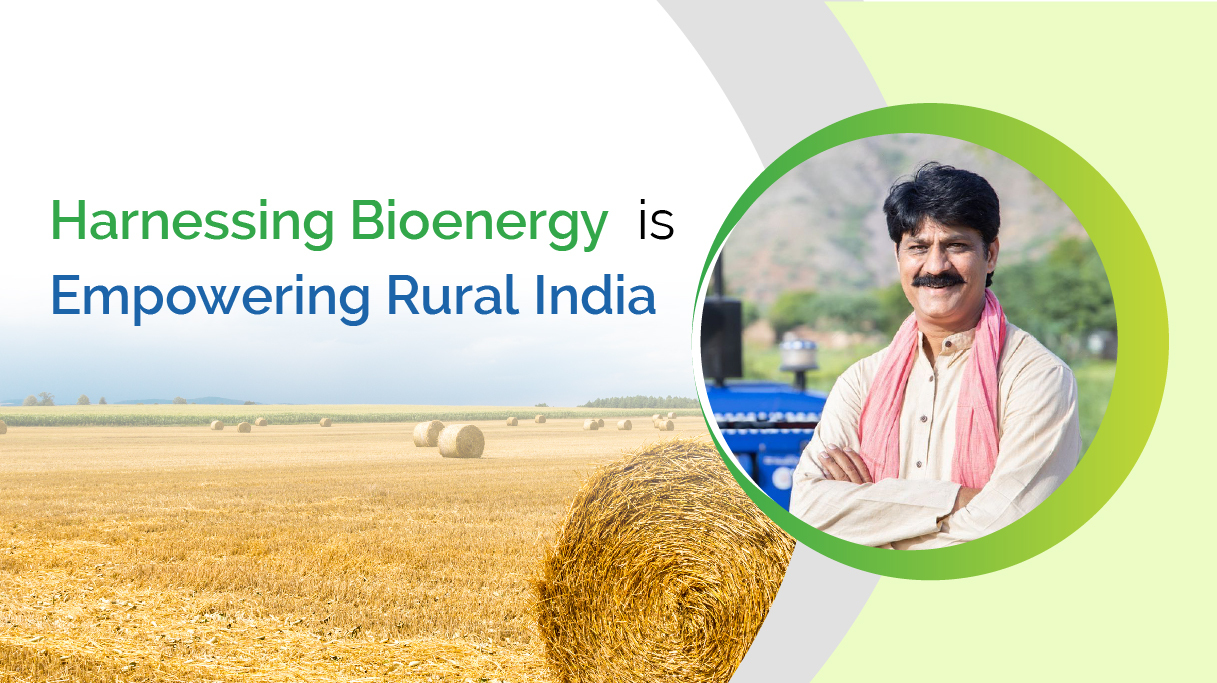 May 5, 2021
May 5, 2021
The Paris Agreement is a legally binding international treaty on climate change. Its goal is to limit global warming to well below 2, preferably to 1.5 degrees Celsius, compared to pre-industrial levels. The aim is to reach global peaking of greenhouse gas (GHG) emissions as soon as possible to achieve a climate neutral world by mid-century.¹
Energy generated by fuel is vital for economic activity and growth. However, the continued use of fossil fuels formed in the geological past from the remains of living organisms is unsustainable. These fuels are generally non-renewable resources and will be depleted over time. Hence the shift now to alternative fuel sources becomes imperative.
The search for alternative energy sources away from fossil fuels The aim in India is to diversify our energy sources and not be largely dependent on crude oil. Biofuel is a viable alternative. In 2020-2021 agriculture contributed to 20% of India’s economy.² Biowaste is a natural byproduct of agriculture which can be converted to biomass to make biofuel. India launched the National Biofuel Policy (NBP) in 2008 to achieve 20% blending of biofuels with fossil fuels by 2030. What exactly are biofuels? Biofuels are produced from blending fossil fuel with ethanol extracted from biowaste and renewable organic material such as farm stubble. The ratio of the mix ensures the properties of the fossil fuel are unaffected, while the amount of GHG it emits is reduced. Biomass is renewable, widely available, carbon-neutral and can potentially provide significant employment in rural areas. Biofuel manufacture and usage have been encouraged in India since their sustainability became apparent over time. Biofuels benefit the environment in multiple ways. Their production uses biomass from crop stubble, a waste product of harvesting. Biofuels reduce the use of fossil fuels and, as a result, the quantum of GHG emitted. Their production processes, timelines and quantities can be planned. Biomass from a variety of crops - sugarcane, wheat, rice, corn, groundnuts - is put to good use. No discussion on biofuels is complete without mentioning the important part they play in reducing the effects on the environment due to disposal of crop stubble. Burning crop stubble after harvest is a global phenomenon. It leads to changes in global atmospheric chemistry, climate change and also to nutrient and resource loss. Crop stubble - Burning or Reusing According to the UN body Intergovernmental Panel on Climate Change (IPCC), over 25% of the crop stubble is burnt in India.³ Stubble burning is a practice to prepare the field quickly for the next harvest. For example, in North India after the rice crop is harvested, the paddy residue normally takes one and a half months to decompose. This however is too late for farmers to plant their wheat crop. Hence this quick-fix method to complete the next sowing in time. Approximately 22,289 Gg (Gigagram, one Gg is 10,00,000kilograms) of paddy stubble biomass is generated annually and out of this, 13,915 Gg is burned. Haryana and Punjab alone produce 48% of the whole straw production which is openly burnt in situ.⁴ Crop stubble can instead be converted to biofuel. This has manifold benefits. Converting stubble to biofuel lessens air pollution. The farmer earns by selling the stubble, till now of no economical value, to bioenergy companies. Usage of biofuels reduces dependence on fossil fuels, a plus for the environment. The scenario of installed capacity for renewable sources of energy in India is encouraging.-
Rising share of non-fossil sources in installed capacity: 30.5% in March 2015 to 37.1% in October 2019 (NDC: 40% by 2030)
-
International partnerships: International Solar Alliance (ISA)
-
Corporate voluntary commitments: Indian conglomerates committed to 100% electricity consumption from renewables - TATA Motors and Infosys by 2030, Mahindra & Mahindra by 2040⁵
References -
i. United Nations Climate Change UNFCCC https://unfccc.int/process-and-meetings/the-paris-agreement/the-paris-agreement
iii. Pg 424,https://aaqr.org/articles/aaqr-13-01-oa-0031.pdf
41 Views 0 Comments


 December 19, 2022
December 19, 2022

Graphinet Developer
says:Hi